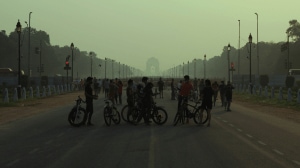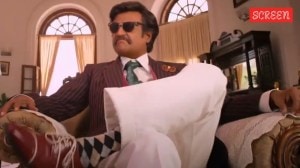Netaji didn’t die in the plane crash: latest panel’s twist
A commission set up to unravel one of India’s enduring mysteries may have just compounded the confusion about Netaji Subhash Chandra Bo...

A commission set up to unravel one of India’s enduring mysteries may have just compounded the confusion about Netaji Subhash Chandra Bose.
The third commission to try and crack the same puzzle, the Justice N C Mukherjee Commission, has concluded that Netaji did not die in a plane crash in Formosa on August 18, 1945. This, in fact, contradicts the first two commissions— and the official Indian line.
After five years and three extensions, the Mukherjee Commission has also found that the purported ashes of Netaji, still officially believed to be at Renkoji temple in Japan, were brought back to India in 1954.
The commission in its report is learnt to have also trashed the folklore that Bose spent his last years as an ascetic in India and indicated that he had been to Russia after the date of ‘death’.
While the commission’s visit to Russia was not fruitful because of ‘‘non-cooperation’’ from the Indian Embassy in Russia and the Russian authorities, it came across de-classified KGB documents that included a 1947 note from a Mumbai-based KGB agent to Stalin. The note from Siayadinats, who was disguised as a textile merchant, said ‘‘if the Communist movement in India has any chance of surviving, then Chandra Bose is the only hope.’’
But perhaps the most startling of the findings is the one on Netaji’s ashes. The commission came across documents from the archives that suggest that purported ashes were brought to India in 1954.
A note from M O Mathai, Prime Minister Nehru’s private secretary, in 1954, said: ‘‘A small amount of Rs 200 and odd was received by the Minister of External Affairs from our Embassy in Tokyo with the ashes of late Shri Subhash Chandra Bose. This money is being kept in the External Affairs Ministry. I have consulted the Prime Minister about this and he agrees that this amount might be transferred to the INA Relief Fund. The Ministry might get in touch with the General Secretary AICC, 7 Jantar Mantar Road, New Delhi and have this money transferred to INA funds. A receipt might be obtained for ministry’s record.’’
|
What the others said
|
|||||
|
1956: Shahnawaz Committee: Concluded that Netaji was killed in the crash. But Suresh Bose (elder brother of Subhash, and a member of the committee) put a dissenting note on the findings. Story continues below this ad 1970: Khosla Commission: Was not allowed to visit Formosa at all. But concluded that Bose died in the crash in 1945. |
|||||
Interestingly, on November 30, 1953, Nehru himself had written to the Indian Ambassador to Japan asking him to inform the priest of Renkoji temple that the ashes would be brought to India ‘‘at a proper time.’’ In the same letter, Nehru also instructed the Indian Ambassador to ‘‘help the priest in any way that he thinks proper including financially.’’
But four decades later, in 1995, India’s Ambassador to Germany Satish Lambah was asked to meet Netaji’s daughter Anita Pfaff to make arrangements to bring back the ashes from the Renkoji temple. An internal note, available with The Sunday Express, suggests India was paying Yen 60,000 to 1 million a year for the upkeep of the temple.
In 1995, Pranab Mukerjee, who was then External Affairs Minister, also discussed the possibility of bringing back the ashes with his Japanese counterpart. Mukerjee visited Germany in 1995 and met Pfaff in this connection.
That throws up another mystery. If the ashes were brought in 1954 as Mathai’s note says, where are they kept? Now, that may call for another commission.






- 01
- 02
- 03
- 04
- 05

























